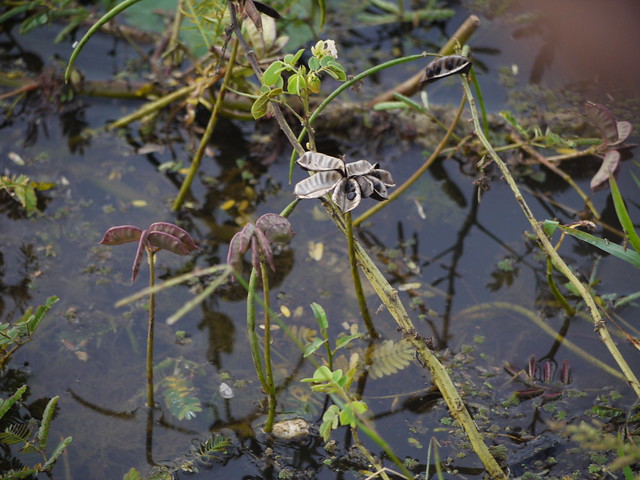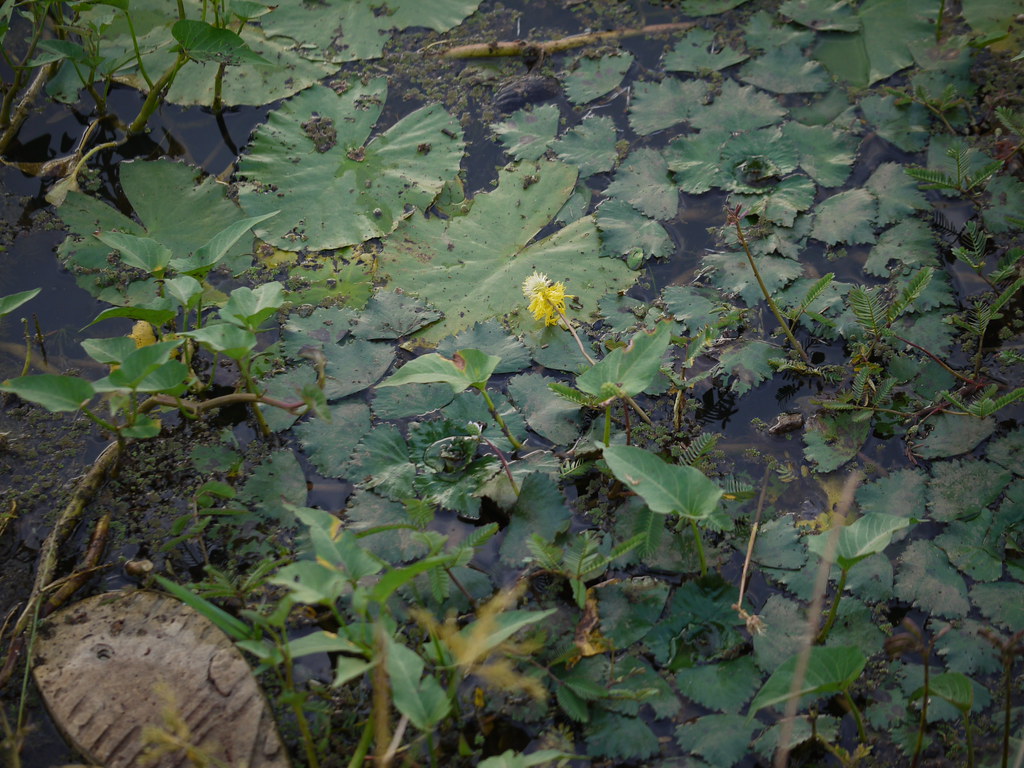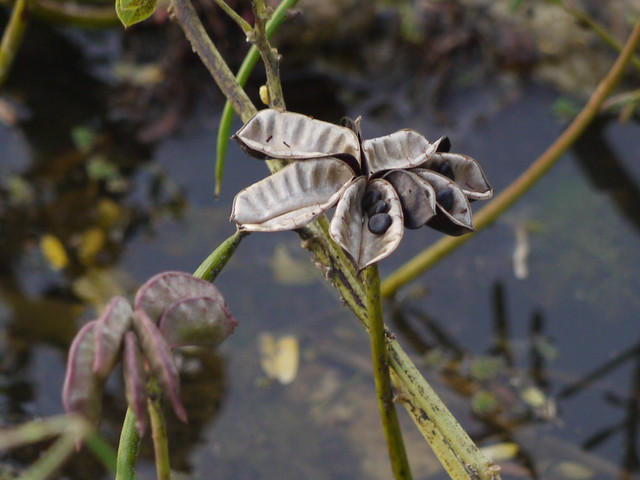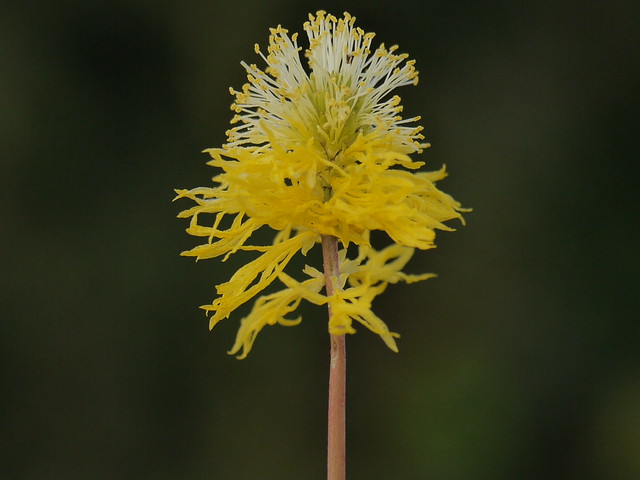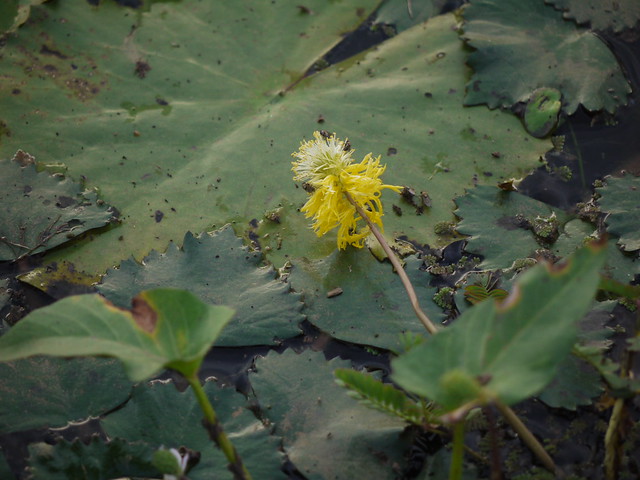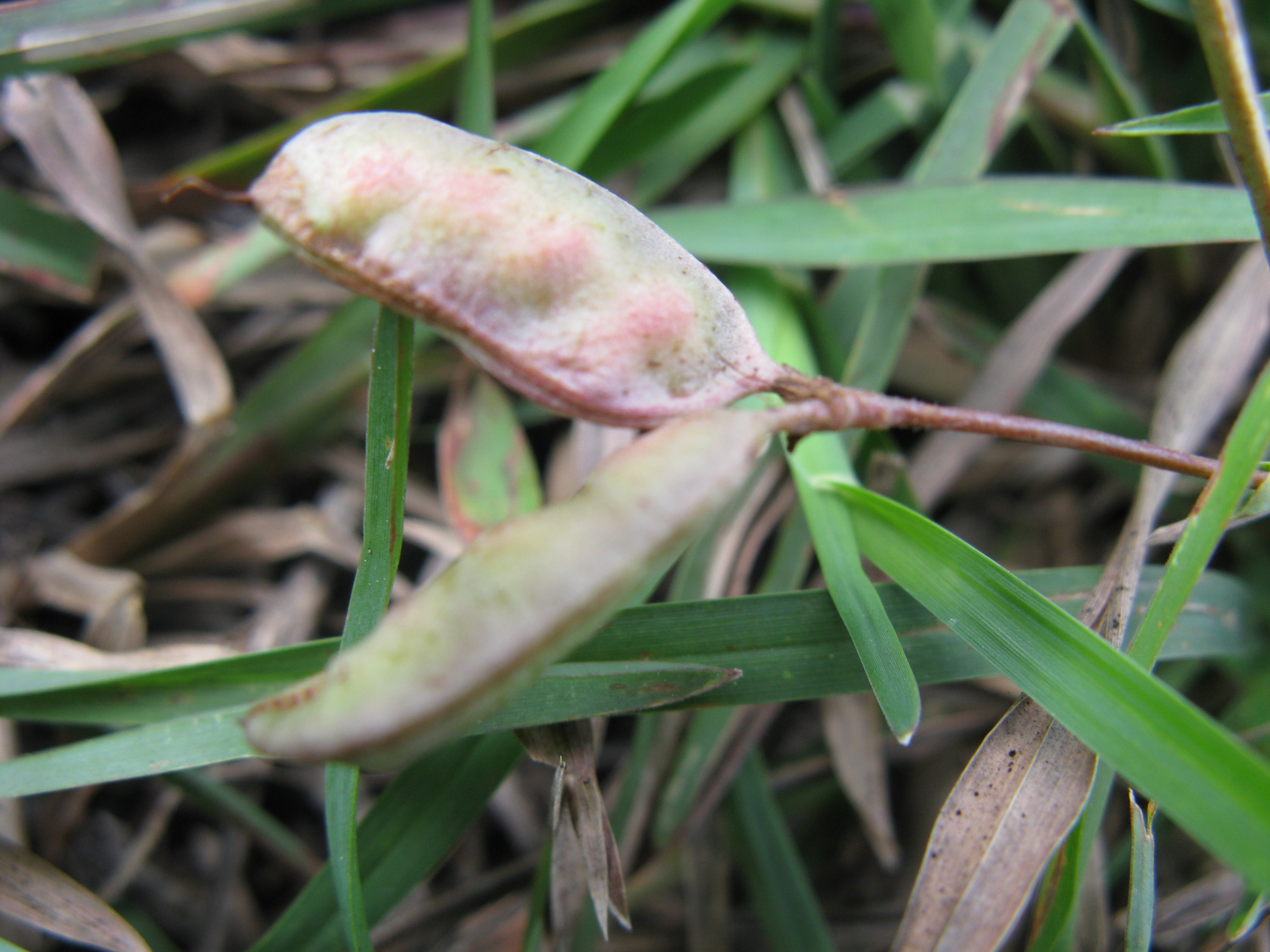Neptunia oleracea Lour. (Syn: Acacia lacustris (Willd.) Desf.; Desmanthus lacustris Willd.; Desmanthus natans Willd.; Desmanthus natans “Willd., p.p.”; Desmanthus stolonifer DC.; Mimosa aquatica Pers.; Mimosa lacustris Kunth; Mimosa lacustris Bonpl.; Mimosa natans L.f.; Mimosa natans sensu auct. non L.f.; Mimosa prostrata Lam.; Neptunia natans (L.f.) Druce; Neptunia prostrata (Lam.) Baill.; Neptunia stolonifera Guill.; Neptunia stolonifera Guill. & Perr.); Common name: Sensitive Water Plant, Water mimosa, Garden puff • Hindi: लजालू Lajalu, छुई मुई Chui-mui • Manipuri: ঈশিং ইকাইথবী Ishing ikaithabi • Tamil: Sundaikkirai • Malayalam: Nittitoddavaddi • Telugu: Nirutalavapu • Kannada: ನಿದ್ರಾಯಮ Nidrayam • Bengali: পানীলজক Panilajak • Sanskrit: Alambusa Neptunia oleracea, commonly known in English as water mimosa or sensitive neptunia, is pantropical nitrogen-fixing perennial legume. Genus and common name come from Neptune, god of the sea, in reference to the aquatic habit of some species in the genus. Aerenchyma (white spongy air-conducting tissue that gives stems buoyancy) forms on stems floating in water, but does not form on stems growing on land. Plants typically grow to as much as 6″ tall, but stems will spread in the water to 3-5′ long. Stems are clad with bi-pinnate, fine, mimosa-like sensitive leaves that close up when touched. Primary leaf segments have 8-40 small oblong leaflets arranged in opposite pairs. Tiny greenish-yellow flowers are densely crowded into feathery orbicular inflorescences that bloom in summer. Fruits are flat pods (to 1-2″ long). Floating aquatic plant stems often form thick foliage mats and is considered to be an invasive aquatic weed in some tropical waters where large mats may form that choke waterways, resulting in restricted water flow, reduced water quality, reduced fish activity and loss of some underwater and native wetland plants. Primarily found growing prostrate in wet soils near the water’s edge or floating on the water in relatively still-water areas. The native habitat of Neptunia oleracea is unknown, but some experts believe it is in the area of Mexico to northern South America. This plant is cultivated as a vegetable in southeast Asia (leaves and shoots have cabbage-like flavor). Young ends of stems and pods are edible and usually eaten raw as a vegetable in Thailand and Cambodia and cultivated much like rice. The young leaves, shoot tips and young pods are usually eaten raw or in stir-fries and curries such as kaeng som.[1] Juice of the stem and roots are used for medicinal purposes. Whole plant extract exhibited cytotoxic activity on neoplastic cell lines. Extract of the herb exhibited hepatoprotective activity. (From Wikipedia on 27.1.15)
Flora of Manipur: Neptunia – efloraofindia | Google Groups : 2 posts by 2 authors. Attachments (2) Neptunia oleracea, a common vegetable in Manipur.
Neptunia oleracea Lour. 2 posts by 2 authors One more aquatic Neptunia oleracea Lour. Family: Mimosaceae 19/12/2014 Gingee Reserve Forest, Tamil Nadu Lovely post, yet to see in real, thanks along KSH 34 between Malamba & Gundolli :: Neptunia oleracea :: DVFEB45/78 : 1 post by 1 author. 5 images. along Karnataka State Highway No. 34 … between Malamba & Gundolli Date: 15 OCT 2011 … Altitude: about 640 m asl Neptunia oleracea Lour. … (family: Fabaceae) aquatic fabaceae … rare nice to see we have some arhar in Bengal that like to grow on the muddy banks of ponds but this in the pond… Aquatic plant for id / TBNMAY 2 /2 : 5 posts by 3 authors. Attachments (1) Please id this whch was found in Thenkarai tank, Madurai district, Tamilnadu in Jan 2015. Check for Neptunia oleracea.. … you are on the right tract, … I think I would like to have a close up of the leaves and the flower I cant see any details. Google has not been able to enlarge this picture Thank a lot … for the id. Creeping herb : 6 posts by 3 authors. Attachments (2) Is this Neptunia plena or N. oleracae [Mimosaceae]? I got this in a moist locality. The leaves have sensitivity for touch (similar to Mimosa pudica) |
Neptunia oleracea
Updated on December 24, 2024

